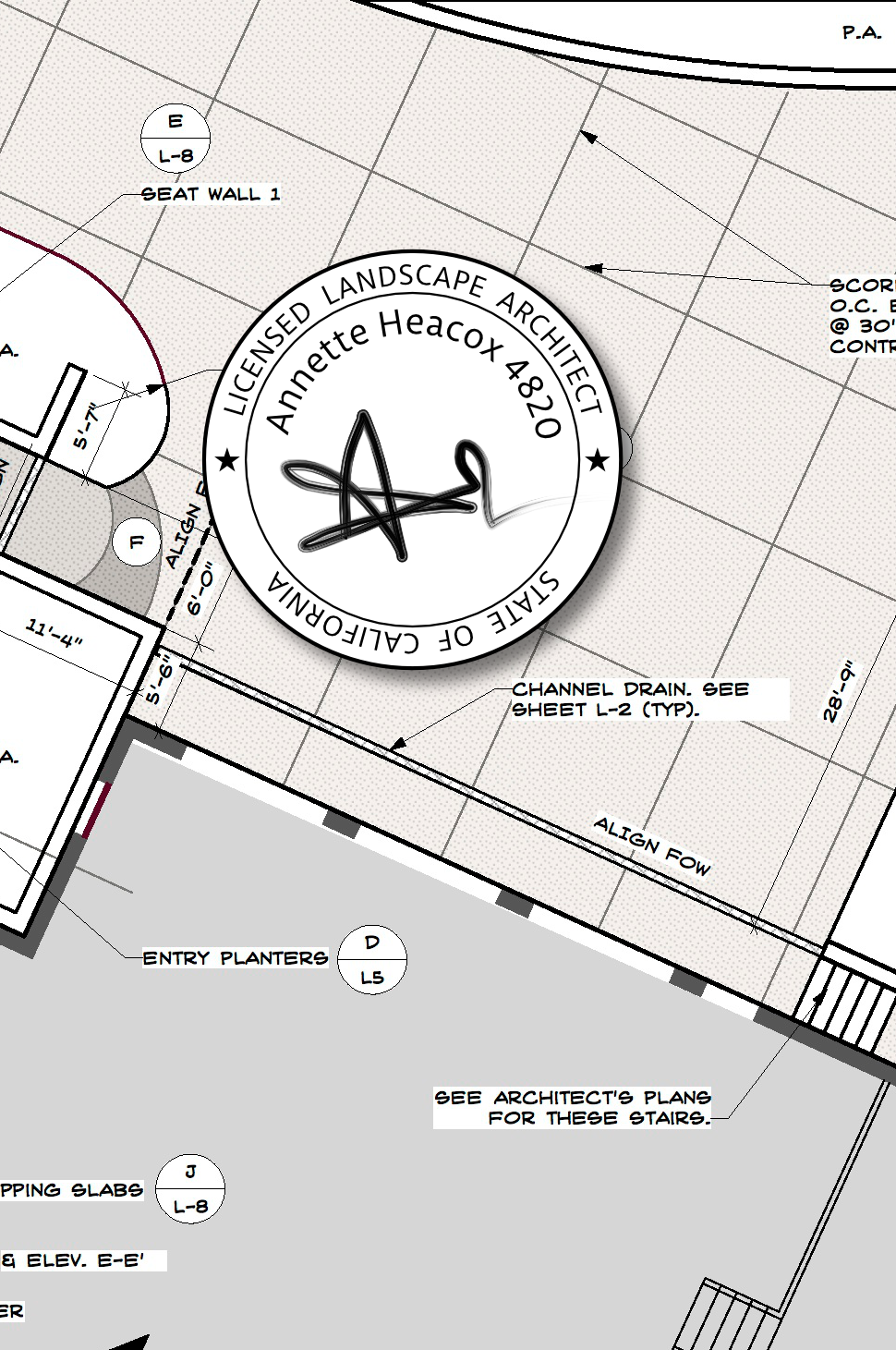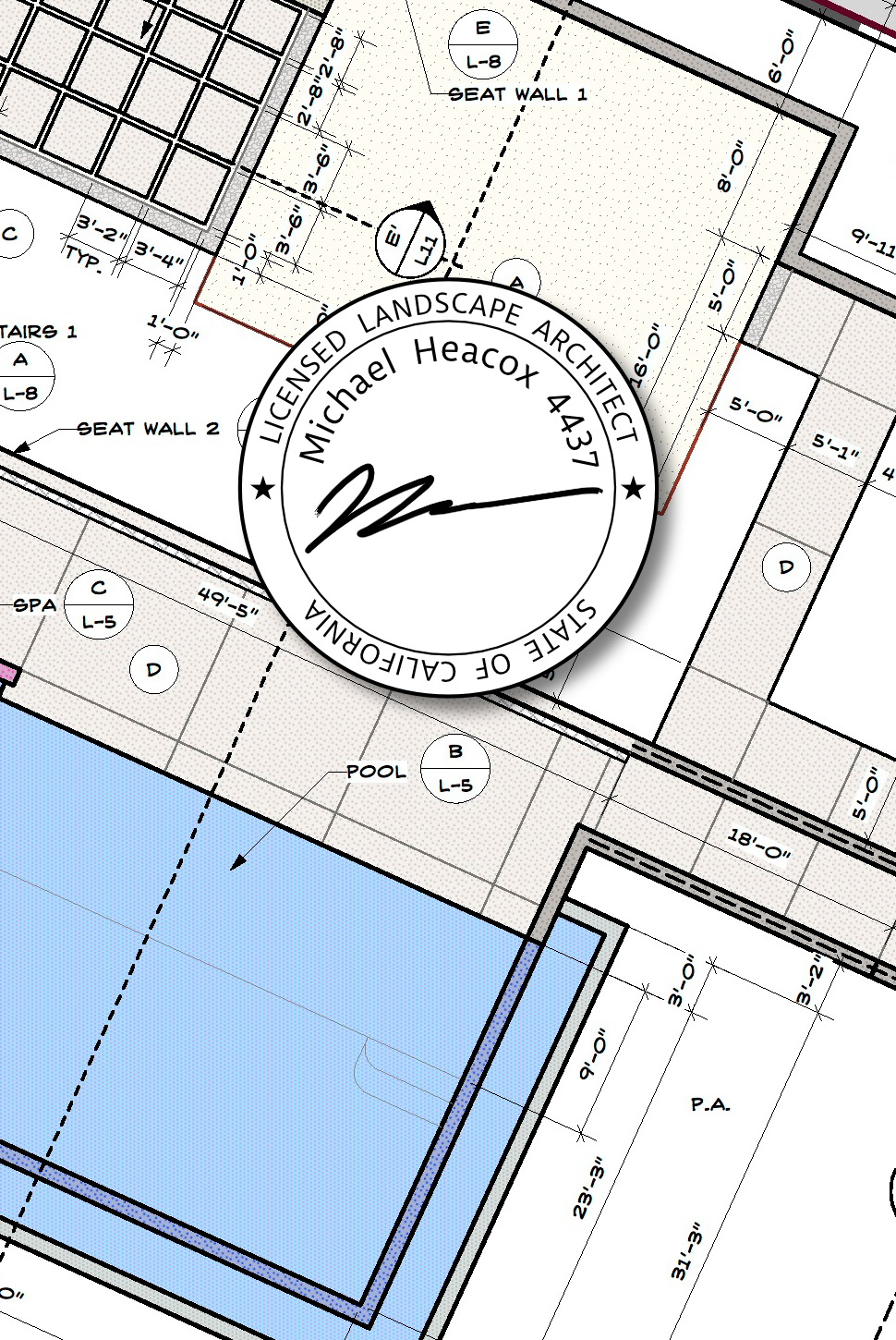
About Landscape Architects...
What does a landscape architect do?
Where an architect designs buildings - but does not build them - a landscape architect designs exterior spaces. We create plans, sketches, models and renderings to illustrate projects and specify all the elements that go into a new garden: drainage, materials, plants, structures and lighting.
Our work could also be called site design, site specific design or or site planning. Landscape architects may check the progress of a project in construction to ensure that the design intent is being followed.
In an ideal situation, the landscape architect and the architect would work with the client from the very beginning of the project to configure the building and the site to work together, considering topography, views, breezes, exposure, style and a host of other factors. This workflow also allows modification of the architecture in the plan stage to enhance or create outdoor spaces, link views and facilitate circulation between the structure and the outdoor use areas.
Ideal situations are rare, however, so typically the architect completes his or her plans well before the landscape architect ever arrives on the scene.
The landscape architect is often involved in getting an as-built survey of the site, since building positions often shift from those shown on plans when they are constructed. An as-built survey shows current site conditions, with the location of the buildings, paved areas, trees, topography and hopefully infrastructure such as sewers, water mains, etc.
Subject to planning restrictions, landscape architects design features and spaces around the buildings.
These include unglamorous but necessary things such as screen walls for air conditioning units and trash enclosures, and fences.
Parking lots are another place where our services are called for. These features are more complicated than you might think, since there are shading requirements that must be fulfilled for plan approval. Strange as it may seem, parking lots in the Central Valley are required to be shaded, at least for new construction. They are supposed to be spanned by leafy tree canopies or covered by structures so you can walk across them in comfort.
We design entry monumentation, the typical walls, planters and structures you see when you enter a housing development.
We may lay out sidewalks, outdoor terraces and do street renovations (called "streetscapes").
We design hotel and resort patios, trellises, pools, water features, outdoor kitchens and bars - and planting, of course. We lay out sports facilities such as tennis courts, bocce ball and pétanque areas and jogging/exercise trails.
Designs for vineyard tasting rooms typically have patios, serving counters, fountains, shade structures and some kind of garden, whose plants often have fragrances found in wine. Some have outdoor art display areas. Many new wineries incorporate sustainable design principles, with pervious paving and low water use plants.
Landscape architects design parks and community center gardens, specify play equipment, benches and different use areas.
Many features in national and state parks were designed by landscape architects. Interpretive areas with signs, seating and trails are obvious examples, but landscape architects also lay out campgrounds and camp amphitheaters.
Cemeteries are a specialized branch of the profession, where the various gardens and areas take form on plan before being built.
The plants you see along the freeway and along major boulevards - along with their irrigation systems - are another example.
Airport gardens, one of the first things people see as they arrive in a new city, were the work of landscape architects. This is where I have to say that we had nothing to do with the acres and acres of lawn at the Sacramento Airport, and are perplexed as to why they don't replace it with something more interesting and water conserving. Maybe they're pumping the water directly from the river for irrigation - I certainly hope it's not potable water!
Last but not least, we create residential landscapes. These include the typical patios, walkways and planting areas. They may have swimming pools and spas, shade structures, fountains, edible gardens, outdoor kitchens and fireplaces. Some may have sculpture gardens and outdoor theaters.
What's the difference between a landscape architect and a landscape designer?
All landscape architects are landscape designers, but not all landscape designers are landscape architects. Both landscape architects and designers can design equally beautiful (or equally horrid) landscapes.Either can also hold a contractor's license and be involved in the actual process of construction (although most choose to work with contractors)
The difference boils down to the fact that landscape architects must qualify for and pass an arduous examination before they can use the title of landscape architect. The license entitles them to design commercial and public spaces, in addition to residential landscapes. Landscape designers are currently more restricted when it comes to designing non-residential spaces.
Landscape designers may be certified by the Association of Professional Landscape Designers (APLD). In fact, it's possible to be both a landscape architect and a certified APLD landscape designer.
Typically, a landscape architect will have a degree in landscape architecture, and must have two years' experience working for a landscape architect before being eligible to take the test.
It's tougher to evaluate landscape designers from their background. They may or may not have a degree in landscape architecture, although many do. Their training may come from other sources. They aren't licensed by the state (unless they also have contractor's licenses). None of this makes them bad or good - it just means that you have to ask questions, review their portfolios carefully, and make a decision based on their portfolio and the outcome of your interview.
None of this has any bearing on aesthetics, however. Testing and certification look at the skill set required to create plans, design irrigation, draw details and otherwise create spaces that are safe. Since aesthetics are subjective, you'll have to look at the designer's portfolio and decide for yourself.
Some designers like to imply that they're landscape architects, even going so far as to state that they provide "landscape architectural services". When in doubt, you can check with the California state board's site. If they're not on the list, you can call the Board (called the LATC in California) to make sure they weren't omitted by accident. Newly qualified landscape architects may not appear on the list, so don't assume someone isn't a landscape architect if they're not listed.
The real confusion comes in states where anyone can call herself or himself a landscape architect. Some states restrict the title but not the work, so a landscape designer can work on any type of project as long as he or she doesn't actually claim to be a landscape architect. Other states have a practice act that prohibits any unlicensed person from practicing what it defines as landscape architecture.
What does ASLA after someone's name mean?
These letters stand for American Society of Landscape Architects. Someone who has been a member for a long time may be recognized by a jury and awarded fellowship, in which case the letters "FASLA" may appear after his or her name.
This is a professional association, separate from the licensing board. Members typically have degrees in landscape architecture, although they may or may not have a current valid landscape architect's license in the state where they're practicing - although most do.
The ASLA is active in promoting licensure of landscape architects. They publish a magazine, "Landscape Architecture Magazine" with news about products, processes and large and famous landscape architecture firms. They sponsor competitions and give awards (subject to entry fees).
If you want to learn more about the ASLA, click here.



